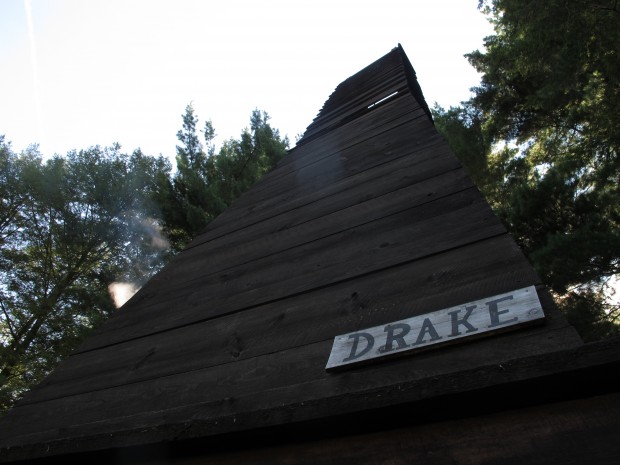Reliving Pennsylvania’s First Drilling Boom: A Visit To The Drake Well Museum
-
Scott Detrow

Scott Detrow / StateImpact Pennsylvania
The Drake Well museum hosts a replica of the world’s first oil well
The Marcellus Shale drilling boom is bringing a lot of changes to Pennsylvania, but the drilling itself isn’t one of them. Pennsylvania hosted the world’s first oil well, after all.
The recently-renovated Drake Well Museum in Titusville, Crawford County tells the story of the first-ever oil boom.
The first stop at the museum is a cartoon. On the screen, Edwin Drake tells you about his crazy idea -that deep pools of oil exist below the earth’s surface, and that all you need to do to reach them is drill a hole.
The video explains Drake’s main innovation – the decision to line his well with pipe, in order to keep the ground from caving back in. It tells the story of the energy industry, from the whale oil that preceded Drake, to the natural gas boom taking place in Pennsylvania and other states.
It’s a sensory experience – the audience is squirted with water when the whales come on the screen, and the seats rumble when Drake drills his well.
Extreme Methods
Some of the museum’s more popular exhibits profile the extreme ends early drillers went to, in order to get oil out of the ground. Take one section titled “ka-boom.” On display: a black horse-drawn carriage, with the world “Nitro Glycerin” painted on the side.
Drillers used the explosive to clear out clogged oil wells. “They would explode it, so that everything that was in the well would come rushing out the top of it,” explained museum spokeswoman Melissa Mann.
But sometimes the nitro didn’t make it to the well. The carriages traveled over unpaved roads, and sometimes they hit one bump too many. The exhibit includes a picture of a splintered wood pile, where a nitro wagon had once stood.
Curator Sue Bates says she’s floored by the details she learns from the letters in the museum’s archives. “A worker in a nitro factory gets a few drops on his feet. Goes out, mixes nitro mud,” she recalled. “He stomps his foot to get the mud off, flies up in the air, lands on the other foot, flies up in the air again. But he lives!” Other documents recall pigs eating the chemical and taking flight.
The drillers also had problems transporting their oil. There weren’t any pipelines or railroads, after all.
The oil men had to transport barrels by horse, or float them down the river. In order to speed up the process, the drillers would sometimes dam up the river, line their oil-filled barges up, and then release the water.
As you might expect, it didn’t always work. One exhibit shows a barge t-boned against a bridge, with other boats piled behind it. Visitors stare in amazement, as the narrator explains how the barrels rolled off the boats and into the river.
“I think OSHA would have had a field day,” with the early drillers, remarked Ernest Graham, who lives in Cumberland County, and was visiting the museum for the first time. “They probably never would have found oil.”
The Drake Well Museum isn’t all about the 1860s. As Pennsylvania experiences a new drilling boom, the museum has added exhibits about hydraulic fracturing and shale drilling.
So you can see a bottle of oil from Edwin Drake’s first well, but you can also pick up a piece of Marcellus Shale.
















